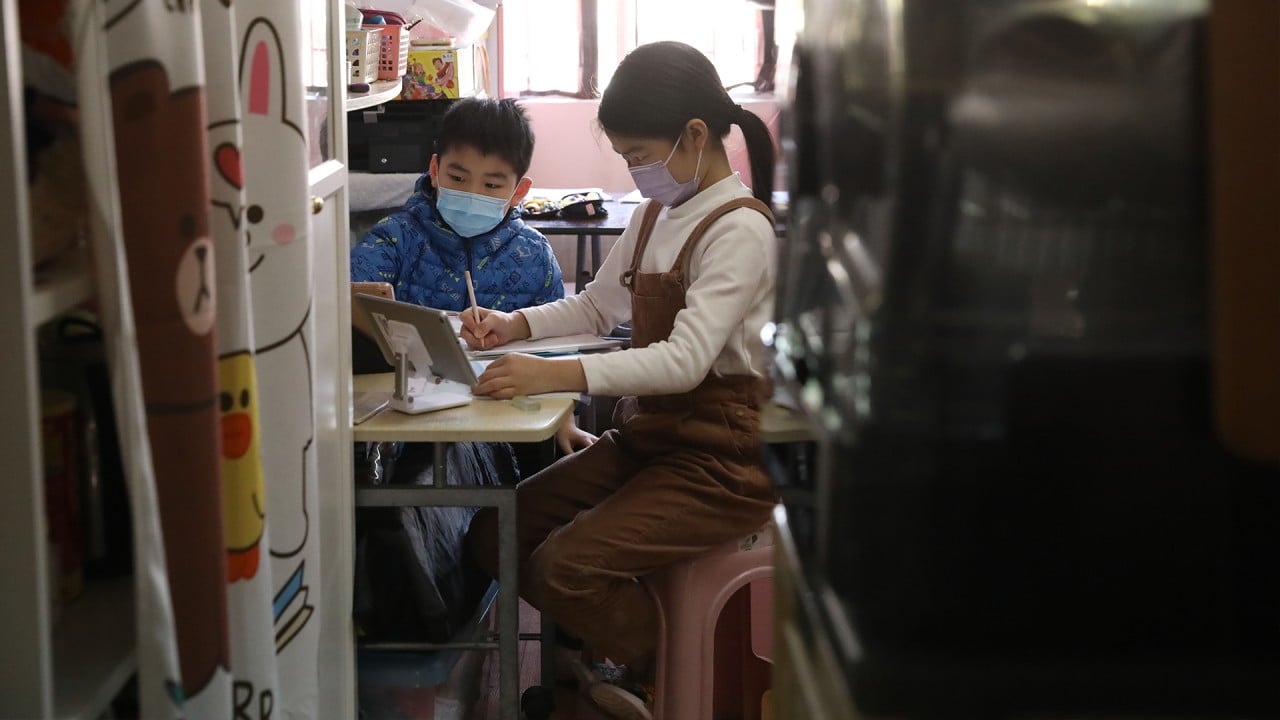
Online learning has exposed flaws in traditional teaching – a return to classrooms would be a step backwards
- Zoom-weary pupils and teachers may long to return to the classroom but, if anything, remote learning should highlight how outdated current teaching methods are
- Schools must use the pandemic as an opportunity to scrap boring lectures and create tailored online lessons for students to follow at their own pace
As a university teacher and parent of a 12-year-old, I believe the pandemic offers a valuable opportunity to reconsider how to teach young people most effectively. While moving activities designed for physical classrooms to Zoom does not provide students with the best learning experience, we as a society cannot afford to miss out on the great potential of e-learning technology to transform the way young people learn.
People often complain that, without meeting face-to-face, students find it difficult to concentrate during lessons, or that teachers cannot monitor students’ understanding and progress, while students also have fewer chances to discuss topics with their peers or seek help from teachers when they have questions.
While these difficulties are certainly real, we should not overlook the fact that teachers and students face similar problems even when they are on campus.
When a teacher is facing more than 20 students in a classroom, how realistic is it to expect them to identify when one is not paying attention? A teacher may ask a question to check a student’s comprehension of a concept, but can this be done frequently enough to cover every student and every concept?
For years, educators have advocated student-centered teaching and learning; but reticence remains a major obstacle for most teachers trying to encourage their students to join in a conversation.
E-learning technologies might help educators address this challenge – if we are open to radical changes in how we teach.
To begin with, we must start phasing out all real-time lectures and replace the boring and ineffective teachers’ monologues with high-quality video lessons blended with tasks and activities that students can complete online.
With the use of an e-learning platform, teachers can monitor students’ performance and provide more personalised support through small-group or one-on-one meetings.
The students may also be assigned learning pathways customised by the platform so they can study more effectively at their own pace. These learning materials could also be accessed by parents, who can support their children more effectively than the current classroom teaching allows.
Students and teachers can interact with one another either in real-time or asynchronously via the online platform, which could then analyse the textual data of the interaction to generate insights about the quality of learning.
This flipped classroom approach has been successfully implemented on autonomous learning platforms such as the Khan Academy but remains peripheral in the mainstream education sector. To benefit from this approach, school and university administrators must be willing to redefine contact hours and liberate students and teachers from the traditional lectures that are ineffective but hard to get rid of.
The Education Bureau has recently allocated HK$500 million (US$64 million) to support e-learning projects proposed by universities and school sponsoring bodies through the Quality Education Fund. Blended and autonomous learning are the bureau’s top priorities.
This funding scheme could offer great opportunities for university scholars and schoolteachers to co-develop exciting new e-learning platforms to support innovative teaching. However, for project applicants with few connections with local schools, it could be challenging to name at least five local school partners, as required by the funding scheme.
A matching platform has been set up by the Education Bureau for schools and project proponents to connect and exchange ideas. But it had attracted only four project proponents and eight local schools by the end of January, probably because applicants are not comfortable sharing their proposals publicly.
The bureau must find new ways to bring university scholars and schoolteachers together and allow flexibility regarding the requirement of five partner schools.
‘Studying abroad’ at home will be part of post-pandemic normal
Hong Kong Education City Limited, a corporation owned by the Education Bureau, has provided a list of common industry standards which applicants are expected to follow to facilitate the interconnection of deliverables across different e-learning platforms.
While this requirement could encourage the development and sharing of e-learning materials within the school community, applicants may need more technical support from the bureau and EdCity to adopt these standards and host new e-learning platforms and deliverables.
Dr Simon Wang is a lecturer in English at Hong Kong Baptist University


